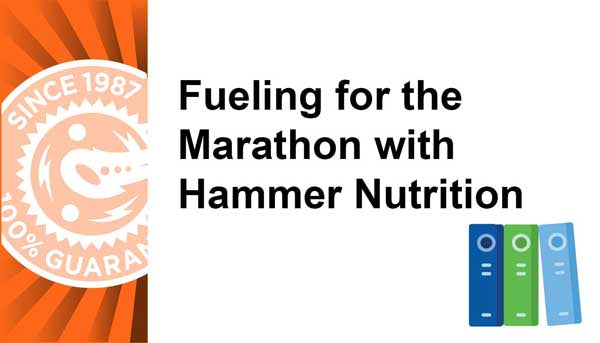By William Misner Ph.D.
INTRODUCTION
The outside membrane of all living cells is composed of a fatty acid film-like substance. Much of the inner life of the cell is determined by the quality of this membrane. If a person consumes modified fat then that is what the body uses to construct the outer cell membrane. It is the "Garbage-In, Garbage-Out" principle magnified in each cell by literally trillions. How well the cell performs in metabolic-demand activities is directly related to the quality of its outer membrane. If the membrane is made from natural not-modified essential fatty acids with a host of other fatty acids which the body selects from its food menu, the cell will respond aggressively defending itself against all sorts of invasive environmental harm and perform efficiently within the role it has been cast. If the cell wall is poorly constructed it is vulnerable to whatever environmental forces present. Every 180 days, approximately 98% of all soft tissues are replicated, rebuilt, or replaced; some more than once during this time period. Good nutrition restricts modified, heated, processed fats. Good nutrition limits fat calories to fewer than 30% of the total calories consumed. Balanced fatty acid nutrition suggests a small amount of essential fatty acids are perhaps the basis for length of lifespan and quality of life as represented by health outcome. Bad Nutrition from an imbalance intake of selected dietary lipids results in deterioration in both health and performance outcome. This paper examines some of the issues from improper fatty acid metabolism and how they may be corrected. Knowing how fatty acid metabolism presents order in cell wall quality is part of the solution to extending both life span with quality of life.
HOW FATTY ACIDS OXIDIZE [PEROXIDATION] AND FORM FREE RADICALS
Where a fatty acid has double=bonding, deterioration may occur similar to rusting iron exposed to water in sunlight. A double bond can exist in two forms. CIS with missing hydrogen atoms on the same side or TRANS when the two missing hydrogen atoms are on opposite sides. Double bonds[=] are formed in fatty acids when two adjacent carbon atoms each have one hydrogen atom taken away. The process is called desaturation. The more double bonds in a fatty acid the more vulnerable it is to free radical oxidation [Lipid Perioxidation] or the unstable the fatty acid is. Steric Acid is a saturated fat, which is relatively stable.
THE 18-CHAIN SATURATED STEARIC (18:0) FATTY ACID [STRAIGHT CONFIGURATION-NO BEND]: H H H H H H H H H H H H H H H H H | | | | | | | | | | | | | | | | | H-C-C-C-C-C-C-C-C-C-C-C-C-C-C-C-C-C-C=O | | | | | | | | | | | | | | | | | \ H H H H H H H H H H H H H H H H H OH
DOUBLE=BOND FATTY ACIDS
The Oleic- (below) is missing 2 hydrogen atoms on the bottom side at the 9th & 10th carbon atom from the left end. That it starts on the 9th carbon atom is what makes it an Omega-9 family fatty acid. The unbalanced (top versus bottom) repulsive forces created between hydrogen atom to hydrogen atom forces the double=bond to BEND in the direction of less repulsive forces. It is the BEND and open double=bond which causes Oleic (18:1w9) to be more susceptible to free radical attack than a saturated form. Its chemical properties are altered making it a more valuable and biochemically active fatty acid than the saturated form 18:0. Like Omega-3 LNA, Omega-3 EPA, Omega-3 DHA and Omega-6 LA, a small portion of double=bond dietary fatty acids are considered essential. A bend may create more instability into a fatty acid's metabolic property.
THE OLEIC (18:1W9) 18-CHAIN MONOUNSATURATED SINGLE DOUBLE BOND "CIS" FAT [BEND IN CONFIGURATION IS AT *?] H H H H H H H H H H | | | | | | | | | |H-C-C-C-C-C-C-C-C-C=C*? H H H H H H H H | | | | | | | | | *? | | | | | | | | H H H H H H H H H *? C-C-C-C-C-C-C-C=0 | | | | | | | | \ H-H-H-H-H-H-H-H OH
DOUBLE BOND FATTY ACIDS
The double=bond [below] in the "TRANS" fatty acid starting at the 9th carbon atom from the left end-carbon has a hydrogen atom on the 10th carbon on the bottom instead of the top, as in the normal "CIS" form above. Normally trans fatty acids are not health friendly and are formed when fatty acids with CIS double bonds are heated. The trans configuration results in the fatty acid not bending as the repulsive forces have been made equal top and bottom. The non-bendable trans double=bond fatty acid come from REFINED, BLEACHED AND DEODORIZED [RBD] oils or fats should be avoided. Processing tends to alter normal & healthy "CIS" double=bonds into unhealthy and straight "TRANS" double=bond fatty acids.
UNHEALTHY 18-CHAIN MONOUNSATURATED SINGLE DOUBLE=BOND "TRANS" FATTY ACID OLEIC (18:1W9 "TRANS" STRAIGHT CONFIGURATION) H H H H H H H H H H H H H H H H | | | | | | | | | | | | | | | | H-C-C-C-C-C-C-C-C-C=C--C-C-C-C-C-C-C-C=O | | | | | | | | | | | | | | | | \ H H H H H H H H H* H H H H H H H OH----------->(*H-ATOM MOVED FROM TOP TO BOTTOM)
HYDROGENATION is another process which alters normal "CIS" double=bonds by elimination them entirely (filling in the missing hydrogen atoms) in an effort to reduce the peroxidation, rancidity, or spoilage rate of the oil/fat. When shelf life is achieved, the unique biochemical effects of the double bonds are sacrificed. Margarine is hydrogenated from cheap REFINED, BLEACHED AND DEODORIZED [RBD] vegetable oils by removing all the double bonds (filling them in with the missing hydrogen atoms) jamming the saturated fatty acids tightly so that a pasty semi-solid spread is created. Peroxidation is the dark side of double=bond fatty acids. When carbon atom to carbon atom is double=bonded close together, they are vulnerable to free radical oxidation more than carbon to carbon single bonds. The first double=bond in a fatty acid is 50 times more susceptible to free radical damage than a Non-bonded saturated fat. The second double=bond is less susceptible to free radical damage [by 40 times], with subsequent double bonds susceptible to free radical damage proportionately decreasing. The sooner the double=bond occurs and the more often double=bonds occur, the more susceptible the fatty acid is to free radical deterioration.
Intake of foods and/or supplements with antioxidant vitamins imposes a remarkable impact on CARDIOVASCULAR HEALTH. There are four main classes of lipoproteins: chylomicrons, in which lipids are transported after a meal from the intestine to tissues where they are stored or used (see "chylomicron" CHYLOMICRON); very low density lipoproteins (VLDL); low density lipoproteins (LDL); and high density lipoproteins (HDL). Both the liver and intestine produce VLDL and HDL; LDL is produced by the metabolism of VLDL. LDL transports 60%-75% of the serum cholesterol from the liver to body cells, including that in the blood vessels. HDL transports 20%-25% of the plasma cholesterol and excess cholesterol from the body cells and carries it to the liver to be excreted. High serum cholesterol is associated with an increased risk of coronary heart disease (CHD). Because LDL carries most of the cholesterol, the serum LDL level is directly associated with CHD risk. The higher the LDL levels the greater the incidence of heart attacks or angina pectoris.
A THRESHOLD LEVEL OF CHOLESTEROL INTAKE in the range of 100-200 mg/day represents the level at which the resulting plasma levels of cholesterol remain within the normal range for people without a genetic predisposition for elevated plasma lipoprotein levels. Consuming foods with more than 200 mg cholesterol daily increase plasma levels sharply reaching maximum at a "ceiling" with intake at or above 400 mg/day. This is the maximum rate that the intestine then processed by the liver can assimilate cholesterol. Decreased rate of uptake and increased biliary clearance accounts for elimination of cholesterol at higher intake rates. Dietary cholesterol generally increases the levels of chylomicrons and chylomicron remnants (also triglyceride-rich lipoproteins) and as expected, increases hepatic cell cholesterol counts. The consequences of this are decreased liver cholesterol synthesis in normal individuals, compensated by increased biliary excretion to lessen hepatic cholesterol. There is a reduction in hepatic LDL receptors, which results in lower clearance plasma LDL levels by the liver resulting in elevated levels of plasma LDL, the major carrier of plasma cholesterol.
The consequences of this are that plasma cholesterol levels tend to remain elevated with increased deposition of cholesterol into artery walls and production of atherosclerotic plaques. A coronary angiogram visualizes the vessels that have significant narrowing.[2] In individuals with low plasma cholesterol [< 150 mg/dL] there is little difference in effect for diets enriched in palmitic acid (saturated - 16:0) vs oleic acid (monounsaturated - 18:1) vs linoleic acid (polyunsaturated - 18:2). For individuals with starting plasma cholesterol of 200 mg/dL, a diet enriched in saturated fat causes cholesterol levels to increase as compared to a diet of unsaturated fatty acids. Beyond plasma levels of 200 mg/dL, the strong cholesterol- raising effect of saturated fat becomes clearly evident. Polyunsaturated and monounsaturated fats appear to be equally suppressive towards cholesterol levels over a 10-week period. The suppressive effect of unsaturated fats is demonstrated in the plasma levels of cholesterol produced on the basis of a diet consisting of various percentages of calories derived from dietary polyunsaturated fats. Switching from diets rich in polyunsaturated fats to diets rich in saturated fats causes a marked increase in plasma cholesterol levels and in LDL cholesterol while the opposite effect is produced when the diet is switched back to one rich in polyunsaturated fats. A popular dietary method for cholesterol-lowering "heart-smart" is achieved by implementing unsaturated fatty acid fish-oils. Fish oils are hypolipidemic Omega-3 fatty acids, which decrease the level of plasma lipoproteins resulting in lower plasma cholesterol. A strong positive correlation exists in cardiovascular-related deaths and total fat, however, this relationship occurs when saturated fats are related to cardiovascular deaths categorized as atherosclerotic lesions. Despite the cholesterol lowering effects of unsaturated fats, the trend for increased risk of cardiovascular disease remains in America. The epidemiological data, combined with clinical trials indicates those factors other than consumption of fats and plasma levels of cholesterol influence the progression of atherosclerosis. A widely held view is that modification of lipoprotein structure, particularly of LDL, has a strong impact on atherogenic potential, augmenting the effects of high plasma cholesterol. The inability of polyunsaturated fats to lower atherosclerosis risk in proportion to the lowering of cholesterol levels may be linked to the propensity of polyunsaturated fatty acid enriched lipoproteins to undergo oxidative modification. This modification in structure and composition alters the properties of LDL from the standpoint of metabolic absorption or processing by vascular entities in terms of immune system character. These features account for a rapid, unregulated uptake of the lipoproteins by macrophages and endothelial cells leading to foam cell formation with elaboration of a fatty streak. The importance of antioxidants is to inhibit oxidation of unsaturated lipids and suppress lipoprotein oxidation. The ability to inhibit various biochemical processes associated with progressive atherosclerosis lesion formation results in a lower incidence of cardiovascular disease. The protective effects of certain antioxidants, most notably vitamin E, have been documented in several epidemiological and clinical trials over the last decade. [2]
The tendency of unsaturated lipids to undergo oxidation is related to the number of double=bonds in the fatty acid molecule. Each additional double=bond after the initial double bond found in monounsaturated fatty acids INCREASES susceptibility to peroxidation by 40 TIMES while a fatty acid with one double=bond is about fifty times more susceptible to peroxidation than a saturated fatty acid with no double=bonds. Hence, a fatty acid with three double bonds is oxidized eighty times as readily as a fatty acid with only one double bond. This oxidative susceptibility of fatty acid is reflected by the tendency of various oils to oxidize.
TABLE OF FATTY ACIDS AND SENSITIVITY TO PEROXIDATION - SATURATED = 1Zero double=bond-------------------------saturated = 1One double=bond Omega 9 OA------ (monounsaturated) = 50Two double=bond Omega 6 LA------ (polyunsaturated) = 90Three double=bond Omega 3 LNA-- (polyunsaturated) = 130Four double=bond Omega 6 AA---- (polyunsaturated) = 170Five double=bond Omega 3 EPA--- (polyunsaturated) = 210Six double=bond Omega 3 DHA---- (polyunsaturated) = 250
POLYUNSATURATED OMEGA 6 LA (18:2W6) IS 90 TIMES MORE SUSCEPTIBLE THAN SAT FATS DUE TO ITS 2 DOUBLE=BONDS (50+40) H H H H H H H H H H H H H H H H H | | | | | | | | | | | | | | | | |H-C-C-C-C-C-C=C-C-C=C-C-C-C-C-C-C-C-C=O | | | | | | | | | | | | | | \ H H H H H H **H** H H H H H H H OH[BEND IN CONFIGURATION OCCURS AT **H**]
POLYUNSATURATED OMEGA 3 LNA (18:3W3) IS 130 TIMES MORE SUSCEPTIBLE THAN SAT FAT DUE TO IT'S THREE DOUBLE=BONDS (50+40+40) H H H H H H H H H H H H H H H H H | | | | | | | | | | | | | | | | |H-C-C-C=C-C-C=C-C-C=C-C-C-C-C-C-C-C-C=O | | | | | | | | | | | \ H H*****H*****H*****H H H H H H H OH[BEND IN CONFIGURATION OCCURS AT H*****H*****H*****H]
It is double=bonds which give fatty acids unique properties but double=bonds increase free radical damage susceptibility. Humans require about 2-3 g of Omega-6 LA and 2-3 g of Omega-3 LNA. Excessive Omega-6 LA should be limited. When too much Omega-6 is consumed it monopolizes a common metabolic enzyme also used by Omega-3, the other essential fatty acid. Too much dietary Omega-6 creates an excess of an easily oxidized fatty acid, inhibits Omega-3 absorption, resulting in an essential fatty acid imbalance. No wonder Americans suffer from so many cardiovascular events; an essential fatty acid imbalance is coupled with excessive over consumption of highly saturated fat foods from: processed foods, red meat, dairy, dairy byproducts, poultry meats, fast foods.
SUMMARY: DIETARY FATTY ACID APPLICATIONS
POLYUNSATURATED FATTY ACIDS RECOMMENDED PER DAY FROM FOOD CHAIN
A recent USA EXPERT WORKING COMMITTEE [3] recommended the following:
A. Omega-6 LINOLEIC FATTY ACID(Omega 6 LA is in many foods)
B. Omega-3 LINOLENIC FATTY ACID ~2.2 g (1 tablespoon of ground organic flax)
C. Omega-3 EPA+DHA ~0.65 g (2 x 200 g/6 oz serving of fatty fish (Salmon, Mackerel, Tuna, Herring, Sardines) per week), or 2-3 fish oil capsules a day.
FOUR APPLICATIONS PROPOSED FOR HEALTHY FATTY ACID DIETARY INTERVENTION:
1) Eliminate of excessive Omega-6 rich veggie oils and products made with them.
2) Eliminate of margarine and commercially processed oils.
3) Increase intake of Omega-3 EPA + DHA rich foods.
4) Supplement only four grams Omega-6 versus 2 grams Omega-3 essential fatty acids daily above numbers 1-2-3 above meets the fatty acid requirement for most subjects.
This is ALL the Omega-3 and Omega-6 you require for optimal cardiovascular health outcome. Does taking only a small dose of essential fatty acids improve serum lipid profiles? Researchers studied the effects of a 1 part Omega-6 to 4 parts Omega-3 ratio flaxseed supplementation as a part of daily diet on serum lipids, fatty acids and plasma enterolactone. They tested 80 volunteers participated in this clinical nutrition study which was carried out in a controlled, double blind and crossover manner. The subjects were randomized to diet sequences AB or BA. Diet A meals contained 1.3-g/100 g ground flaxseed and 5-g/100 g flaxseed oil. Also 3-4 g/100 of inulin and wheat fiber was added. AB diet with non-supplemented foods served as control. Test subjects were on both diets for 4 weeks separated by a 4-week washout period. Fifteen test subjects continued an open part of the study for 4 additional months. The dietary intake, basic blood values, serum lipids, fatty acids and enterolactone were measured at baseline, after both intervention periods and during the open study, at baseline and after 2 and 4 months. Serum thiocyanate and blood cadmium was controlled after both intervention periods. The percentage of flaxseed supplemented test food out of total dietary intake was 20% of energy. The test food contained significantly higher amounts of fiber, polyunsaturated fatty acids (PUFAs) and especially alpha-linolenic acid than the control food. No significant changes were observed in the basic laboratory values or in blood lipids. There was a significant increase in serum alpha-linolenic acid, eicosapentaenoic acid and docosapentaenoic acid. Serum enterolactone concentration was doubled during flaxseed supplementation. Serum thiocyanate and blood cadmium values did not exceed reference values and there was no difference between the diets. In this study Researchers showed that, by adding ground flaxseed and flaxseed oil to one or two daily meals, it is possible to obtain significant effects on serum levels of enterolactone and alpha-linolenic acid. [5]
Processing and heating imposes hydrogenation on fatty acid forcing hydrogen atoms to the double bonds, which lack hydrogen. The once beneficial fatty acid changes its form converting into TRANS" fat, "CIS" fat. Small amounts of Omega-3 and Omega-6 are both essential and beneficial for health and reduced CVD risk. Overconsumption of a potent Omega-3 & Omega-6 fatty acids should be considered: "IF A LITTLE IS GOOD, A LITTLE IS GOOD-->NOT MORE." Processed vegetable oils, butter, and margarine should be restricted. It is an imbalance in dietary fatty foods, which elevate specific lipids, which compromise the efficiency of cardiovascular output.
[1]-By Permission Greg Watson Message #3; Date: Fri, 8 Mar 2002 09:16:05 +1030 @: Optimal_Health_and_Longevity@yahoogroups.com - Fatty Acid Peroxidation & Free Radicals message @: http://optimalhealth.cia.com.au/Peroxidatiion.htm
[2]-Impact of Dietary Fats & Cholesterol @:
http://www.usc.edu/hsc/pharmacy/ced/dietchol/impact.htm
[3]-American Journal of Clinical Nutrition, Vol. 71, No. 1, 179-188, January 2000; 2000 American Society for Clinical Nutrition; Polyunsaturated fatty acids in the food chain in the United States @: http://www.ajcn.org/cgi/content/full/71/1/179









